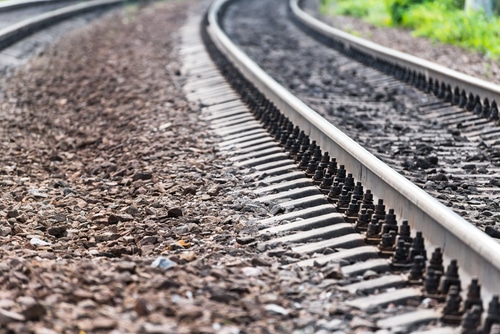
The Transcontinental Railroad was the nation’s first railway connecting the eastern rail lines to the west coast. Transcontinental Railroad APUSH questions might cover the ways in which the government promoted the development of the railway, including the Pacific Railroad Acts, the motivations for building the railway, and the cultural, economic, and political outcomes of its construction.
What is the Transcontinental Railroad?
The Transcontinental Railroad was a continuous rail line constructed between Omaha, Nebraska and San Francisco Bay, California. The rail line connected the east and west coasts, opening up the opportunity for the easy travel of people and goods from coast to coast. Additionally the construction of the railroad was politically motivated, as it served to bind the Union, both physically and symbolically, during the Civil War.
While the building of such a railroad was discussed for decades, lawmakers could never approve on a route due to contention between Northern and Southern interests. After the South seceded from the Union, construction finally began with the passing of the Pacific Railway Act of 1862. The act gave the Central Pacific and Union Pacific cash subsidies and land grants to complete the railroad’s construction.
Important years to note for the Transcontinental Railroad:
- 1863: Construction on the railroad begins
- 1869: Construction is completed when the Pacific and Central lines met at Promontory Summit, Utah Territory
Why is the Transcontinental Railroad so important?
The Transcontinental Railroad expedited the growth of the American West. Frontier life was replaced by city life as towns began to pop up along the construction of the railway. Modern infrastructure, such as telegraph lines, developed rapidly. Agriculture spread and thrived, as the railroad gave farmers the ability to transport crops efficiently. The railroad in general allowed for the speedy transport of resources and goods, and was a boon for manufacturing and trade.
The Transcontinental Railroad changed America in other ways as well. During construction the railroad companies violated federal treaties with the Plains Indians, leading to constant conflict between native peoples and laborers. In the end, countless Native Americans were displaced and saw their way of life disappear as the railroad divided their lands and depleted their resources, including the bison.
What are some historical people and events related to the Transcontinental Railroad?
- The Pacific Railway Act of 1862: The legislature that approved construction of the railroad
- Asa Whitney: New York entrepreneur who first conceived and proposed a railroad connecting Chicago and California
What example question about the Transcontinental Railroad might come up on the APUSH exam?
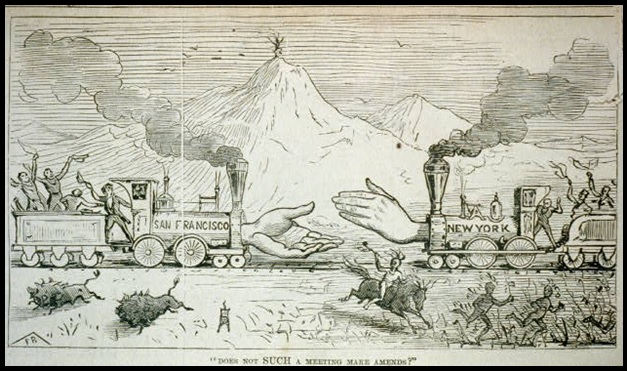
“Does not such a meeting make amends?”. Cartoon by Frank Beard, 1869. (Source)
As shown in the image, the Transcontinental Railroad was seen as a symbol of
A) the coming together of various immigrant groups to build a nation.
B) the strength and reunification of America after a divisive Civil War.
C) the peaceful compromise between white settlers and Native Americans.
D) the healing of a nation after the assassination of President Lincoln.
Answer:
The correct answer is (B). The image shows the western and eastern routes of the railroad coming together, symbolizing the unification of the country. The Transcontinental Railroad physically bound the west coast to the Union, and also interconnected all Americans, in that travel and transport of goods became more efficient. Completed in 1869, the railroad was also seen as symbolically connecting all Americans, from sea to shining sea. The title, “Does not such a meeting make amends?” suggests that the railroad would help the country heal the wounds inflicted by war. Note also the fleeing bison and Native Americans in the foreground, which may suggest that by completing the railroad, European Americans of all backgrounds had joined together in common purpose: to expel the Native Americans by bringing culture and civilization to the plains and western portions of the country. This was a goal of Manifest Destiny, the American philosophy that drove westward expansion.


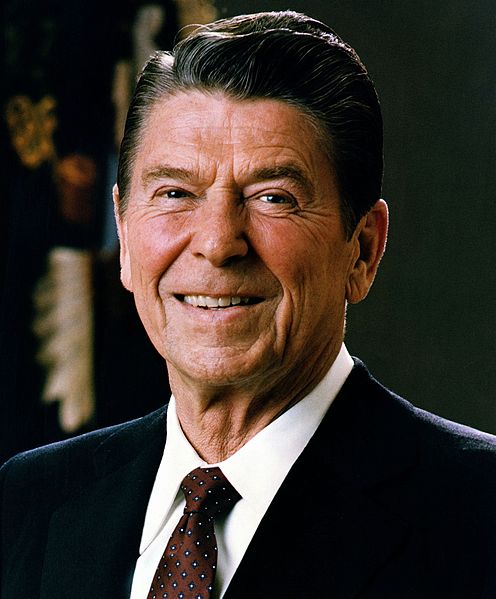
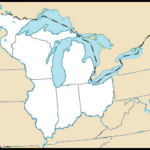
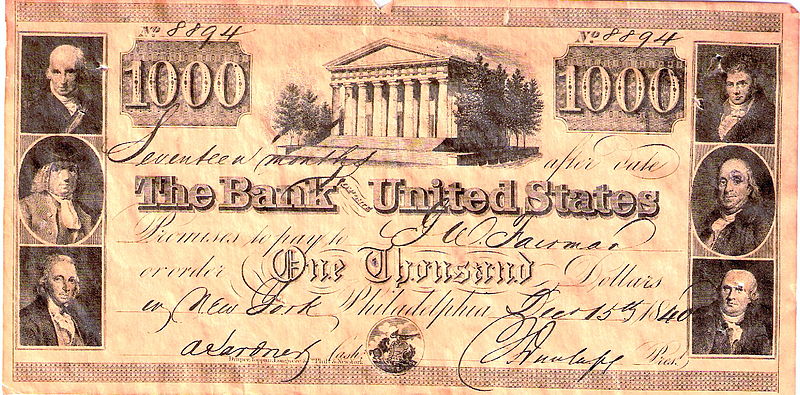
Leave a Reply